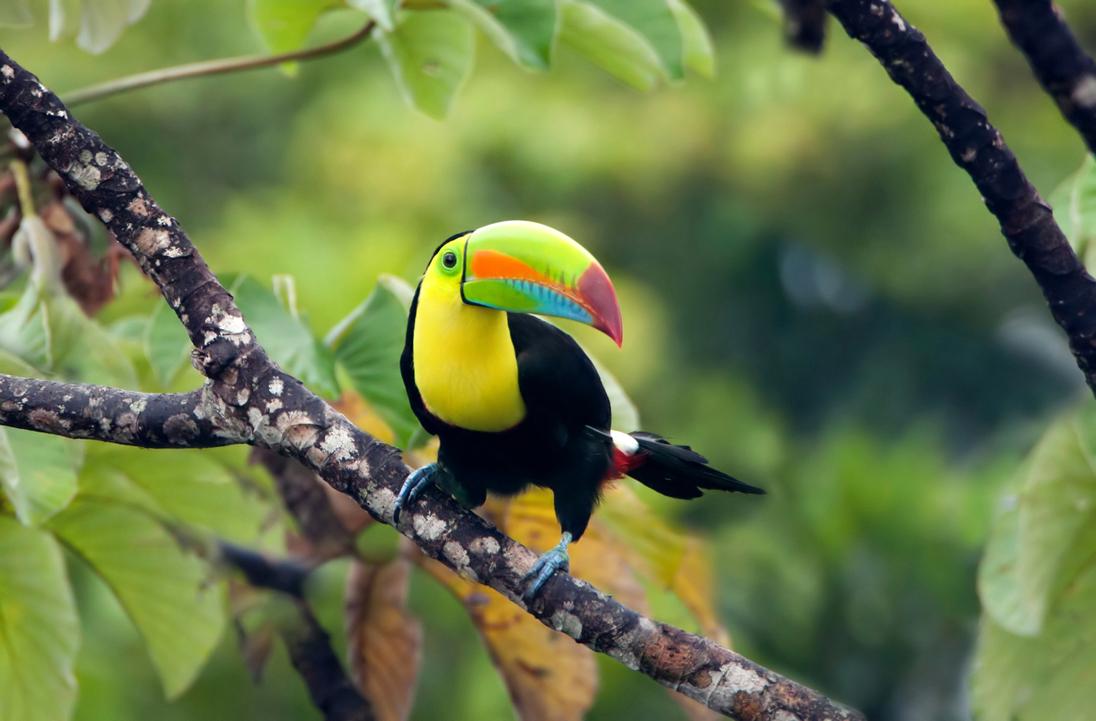Editor's note: News about conservation and the environment is made every day, but some of it can fly under the radar. In a recurring feature, Conservation News shares three stories from the past week that you should know about.
From flitting hummingbirds to colorful toucans and dancing sage-grouse, birds remind us of the remarkable abundance and diversity of life on our planet. They appear on every continent, thriving in landscapes as varied as their colorful arrays of plumage.
But biodiversity loss and climate change threaten to rob this living tapestry of its richness. A new scientific study has revealed that birds with distinctive shapes and sizes are the most likely to be lost, reported Marion Renault for the New York Times.
In many cases, charismatic species are more susceptible to habitat loss than their more pedestrian counterparts. This is because they evolved unique body types and other adaptations to thrive within a very specific, and often narrow, landscape. Think of all those unique finches that Darwin identified during his exploration of the Galapagos — how each one had developed distinctive features to best fit its surroundings and available food sources.
When iconic critters like these are faced with destructive human development or deforestation, even small changes to their habitats can be devastating. Birds all over the world are being impacted, with species like the onyx-beaked Sulu hornbill, the towering white-bellied heron and the impish Seychelles scops-owl all teetering on the edge of extinction.
Ornithologist Eliot Miller warned that at the current rate of extinction, we’re hurtling toward a world that “is really simple and brown and boring.”
But there are even more dire consequences to losing the most interesting creatures on Earth. Distinctive bird species play a specialized role within healthy and stable ecosystems — pollinating plants, dispersing seeds that can regenerate forests, controlling pests, and building nests and burrows that also benefit numerous other organisms. When we lose them “the ecosystem unravels,” Miller said.
Protecting unique wildlife often requires unique solutions. A new tool developed by Conservation International is helping to provide a clear picture of where species are at the greatest risk of extinction and guiding conservation actions to protect them. Using satellite data and wildlife surveys from around the world, a team of scientists created the Species Threat Abatement and Restoration (STAR) metric, which identifies what types of human activities are most harmful to wildlife and where they are happening.
Each species — from birds, mammals and reptiles — receives a “STAR score.” The higher the score, the greater the species’ risk of extinction. For example, using the tool scientists found that the James' Sportive Lemur — a critically endangered primate found in Madagascar — has a STAR score of 400, the highest possible on the scale. Meanwhile, the STAR score of the St. Helena Plover — a tropical bird species — would have been 400 if measured back in 2015, but thanks to sustainable management of its habitat, its score is now 200.
“By determining what activities are harming a species, we also know what actions we need to avoid in order to protect it,” said Conservation International scientist Neil Cox, who helped create the STAR metric. “Armed with this information, local conservationists can identify and use the most effective techniques to protect these species.”
Read the full article here.
Will McCarry is the staff writer at Conservation International. Want to read more stories like this? Sign up for email updates here. Donate to Conservation International here.
Cover image: Keel-billed toucan, Panama (© tzooka)
Further reading:
